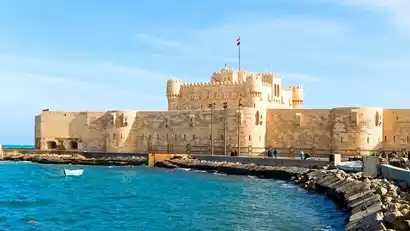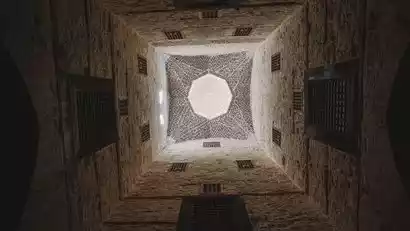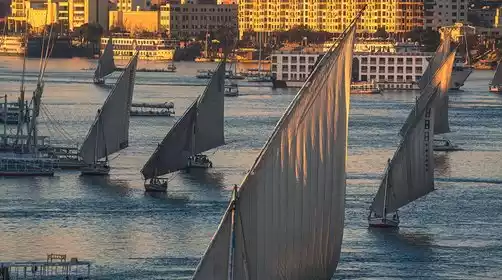Day 1 Cairo★Meeting Day
All day
Today is the gathering day for the activities. Tourists from all over the country will fly to the Mother of the World [Cairo, the capital of Egypt] on their own. The tour leader will arrange time for the pre-introduction in Cairo in the evening.
In Cairo, wealth and poverty, grandeur and desolation, modern and classical religions coexist and are presented to you without any cover. You can see the densely populated Islamic buildings as well as the ancient heritage sites scattered throughout the city.
Note: This is the gathering day. You will be free to do your own activities all day without any itinerary. After entering the country, you can go to the hotel on your own. The check-in time is after 3:00 PM. Those who arrive early can store their luggage and then do their own activities.
How to get to Cairo (Cairo International Airport, airport code CAI)
There are many flights to Cairo, the meeting point. There are direct or connecting flights to Beijing/Shanghai/Guangzhou/Hangzhou/Chengdu. We recommend that you purchase flights from EgyptAir or China Eastern Airlines.
1. EgyptAir direct flights to Shanghai/Hangzhou/Guangzhou/Beijing
2. China Eastern Airlines direct flights to Shanghai
3. Sichuan Airlines direct flights to Chengdu
4. In addition, you can choose Emirates Airlines, Turkish Airlines, Qatar Airways and other airlines to transfer in Dubai, Istanbul or Doha
Booking in advance will get you discounted fares. If you buy connecting flights, make sure there is a certain amount of time between them: usually more than 3 hours, to avoid missing your flight due to delays.
How to get to the hotel
Destination package does not include airport transfers, but includes visa on arrival/e-visa fees (you only need to submit a personal information form, please consult the product manager for details). Upon arrival, tourists will transfer to the designated hotel at their own expense. If you need airport pick-up service, please contact customer service in advance.
Fees: RMB 480 per trip (1-3 people per car); RMB 650 per trip (4-6 people per car)
Alternatively, you can choose to take an Uber (you need to download the APP in advance), but the amount is subject to actual payment, and you must pay attention to the safety of your property and personal safety.
丨Free activities recommended
During free time, please be sure to keep your personal belongings safe to avoid loss!
[National Museum of Egyptian Civilization] The newly opened museum houses 22 mummies. You can visit the Royal Mummy Hall and learn about the mummies' past and present lives.


Day 2 Cairo
All day
The last Friday of April to October 30th is the daylight saving time, and the local time is 5 hours later than Beijing time. The rest of the time, Egypt's time difference is 6 hours later than Beijing time (winter time).
In Cairo, wealth and poverty, grandeur and desolation, modern and classical religions coexist and are presented to you without any cover. You can see the densely populated Islamic buildings as well as the ancient heritage sites scattered throughout the city.
This morning, we'll drive to the Old Egyptian Museum, home to countless treasures. (The new building, not yet fully open, houses the iconic "Golden Mask of Tutankhamun." A complimentary visit to the new building is included on the last day.) Here, ancient Egyptian civilization finally unfolds before us. From the Old Kingdom to the New Kingdom, from Khufu's construction of the great pyramids to Ramses II's victory over the Hittites, from Akhenaten's religious reforms to the discovery of Tutankhamun's tomb, we'll unravel the stories and legends of history, like the waters of the Nile. Many of the treasures later found at Luxor Temple are found here.
Then, visit the iconic Saladin Citadel, a landmark in Cairo. Construction began in 1176 by the 12th-century Egyptian hero Saladin to defend against the Crusaders, and took full shape six years later. Also known as the Mosque of Muhammad Ali, this is a landmark mosque in Egypt, offering panoramic views of Cairo from its rooftop.


Day 3 Cairo → Aswan Domestic flight to be announced
All day
After breakfast, we'll head to the Saqqara Pyramids (including the Tomb of Serapiyon). Egypt's oldest pyramid complex, also known as the Step Pyramids, is less visited, offering a more immersive sense of history than at Giza. Built around 2700 BC, it's the oldest existing pyramid in Egypt and the world's oldest stone mausoleum. As the forefather of the pyramids, the Step Pyramid opened a new chapter in ancient Egyptian architecture. We'll also explore the Tomb of Serapiyon, which boasts several hundred meters of preserved corridors and the tomb of the sacred bull, Apis, built during the 18th Dynasty.
After the tour, we will take a domestic flight from Cairo to Aswan and check in to the hotel to rest.
Note: Since we have to travel between two cities that day, it will be relatively tiring. Since Egypt's attractions are scattered, it is also to allow everyone to see more, so please understand!


Day 4 Aswan → Abu Simbel → Aswan
All day
Today we will drive to Abu Simbel Temple, which is located 280 kilometers south of Aswan, close to Sudan. People come from far and wide to see this temple for the following reasons:
1. The temple's magnificent structure 2. The love story of Ramses II and his beloved Nefertari
Then drive back to Aswan.
At sunset, we will board a Felucca, a traditional means of transportation that has been popular on the Nile River for hundreds of years. It relies solely on the power of the wind to sail. Let us take a ride on the Felucca in the clear waters of the Nile and let the wind carry you for a while.


Day 5 Aswan → Luxor
All day
After breakfast, we'll first visit the Philae Temple, the temple of Isis, the goddess of love, by boat. Built during the Ptolemaic and Roman eras of the 30th Dynasty of Ancient Egypt, its architecture blends the styles of the Pharaonic era with those of the Greco-Roman era. It consists of several sections: the Nectanibut Pavilion, the Colonnade, and the Temple of Isis.
Finally, we will drive to Luxor and visit the Temple of Esna on the way, which is also known as the most beautiful temple in this trip. Why is this low-key and niche temple so special?
1. One of only three complete zodiacs left in Egypt. 2. A restored miracle of color, with 24 papyrus columns, restores the temple to its former glory. 3. A fusion of three great civilizations: nature worship, Greek astrology, and Roman art.
We will then drive to Luxor. The drive will be quite long that day and we will arrange dinner and hotel check-in upon arrival.


Day 6 Luxor
All day
This morning we can choose to take advantage of the optional hot air balloon ride (US$140 per person). Note: You can also choose to order from other platforms.
Note: Ordering self-funded projects includes tour guide service commission and project fees. Guests participate on a voluntary basis and can compare on multiple platforms, but be sure to pay attention to safety.
After breakfast, we'll visit Luxor's iconic Temple of Queen Hatshepsut and hear the story of Queen Hatshepsut. The Valley of the Kings features tombs scattered irregularly throughout the valley, carved into the hillside, their walls and ceilings covered in frescoes. In addition to the three tombs included in the standard ticket, China-TravelNote offers a complimentary entrance to Seti I, Egypt's most expensive entrance, costing 2,000 Egyptian pounds per person. Seti I, father of the renowned pharaoh Ramses II, is the Valley of the Kings' most expensive and largest tomb. From the entrance to the final chamber, the tomb measures 210 meters horizontally and descends 45 meters vertically. This massive rock-cut cavern has been transformed into an underground palace, its walls and ceilings covered in frescoes and ornately decorated to the point of astonishment.
Then, in the evening, experience a special carriage tour of the magnificent Luxor Temple. The sight of tall, handsome black horses and the richly decorated carriages alone is enough to excite you! As night falls, China-TravelNote offers a special Luxor Temple Night Tour. Some say you haven't been to Egypt if you haven't visited Luxor Temple. The evening lights illuminate the temple, creating an even more mysterious and majestic atmosphere than during the day. Experience the splendid civilization of this ancient nation, spanning millennia.
Note: The ticket to the Valley of the Kings only includes the first entrance ticket, which allows you to visit 3 tombs (the tour guide will decide which one to visit based on the on-site situation). If you want to visit other tombs, you will need to pay extra and pay attention to the group gathering time. Thank you very much!
Note: Optional activities include tour guide commissions and program fees. Participation is voluntary. We cannot assess the safety or legitimacy of bookings made through Taobao or other platforms. Please understand.


Day 7 Luxor → Hurgoda
All day
After breakfast, we'll drive to Karnak Temple, the largest temple in ancient Egypt. It's the greatest of all Egyptian temples, a city of temples, and all subsequent temples were designed and constructed according to its design principles. More than just a temple, it's a complex of ancient Egyptian architecture encompassing sanctuaries, pavilions, pylons, and obelisks. The most striking feature of the temple is its vast, forest-like Great Hall of Pillars.
We'll then drive to Hurgoda (Red Sea), a beautiful coastal city on the Red Sea. On one side lies the desert, on the other, reefs and azure waters, with seagulls soaring overhead. The sun shines year-round, and even in winter, the water temperature remains around 20°C, making it a popular diving and snorkeling destination – a truly beautiful gift from nature. However, the Red Sea isn't red; it's because of a type of algae that grows there. During certain seasons, the algae die in large numbers, turning the sea red and tinging it with reddish-brown color, hence the name.


Day 8 Hurgoda (Sea)
All day
After breakfast, we will arrange a special [Red Sea yacht snorkeling trip]. The Red Sea is a holiday resort, one of the world's top ten seas, and it beats any island in Southeast Asia. The best way to experience it is to go out to sea by boat. We will arrange lunch on board and snorkel along the way (life jackets/reusable snorkeling fins and masks are provided, and the rest must be provided by yourself) to see the coral reefs and fish, the rich fish and sea creatures, and even the chance to encounter dolphins!
Notice:
1. Please pay attention to safety when getting on and off the yacht. Line up in order and avoid crowding. Be careful of slippery surfaces.
2. Do not make any dangerous actions before the captain and lifeguard make arrangements. It is strictly forbidden to go into the sea without permission. You must wear a life jacket when going into the sea.
3. You must bring personal items such as bath towels and swimsuits when going out to sea. Please take good care of your important personal items.
4. Please purchase travel accident insurance in advance.
5. The four-wheel drive vehicle is quite bumpy during driving. The elderly, weak, women, children and patients should participate in the sand rush and sea activities with caution!
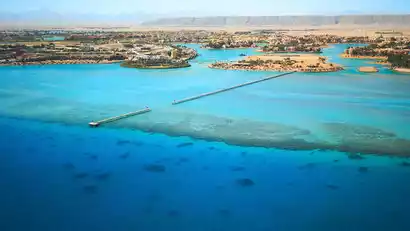
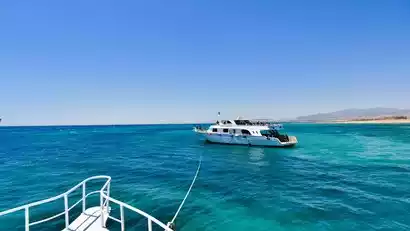
Day 9 Hurgoda → Cairo
All day
Today we can wake up naturally in the hotel, then continue to stroll along the beach, and then we will arrange a meal at the local top 1 [specialty seafood restaurant] and drive from Hurgoda to Cairo.
In the afternoon, head to Souk Khalili to experience a unique take on the Egyptian street life. For Egyptians, the long nights are just the beginning of nightlife. Locals boast that Café Faisalwi, even more emblematic of Cairo than the pyramids, has been packed every day since 1773, except during Ramadan. This old, mirrored cafe is perpetually buzzing with the air and bustling with customers from afternoon until the early hours. A frequent visitor to this cafe, the renowned Nobel Prize winner for literature, Naguib Mahfouz, once found countless inspiration there and wrote his world-shaking trilogy. Afterward, check into the hotel to rest.
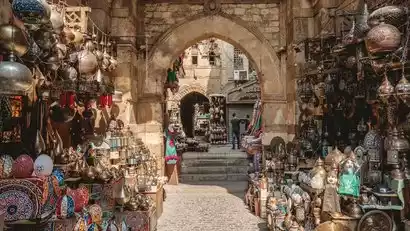
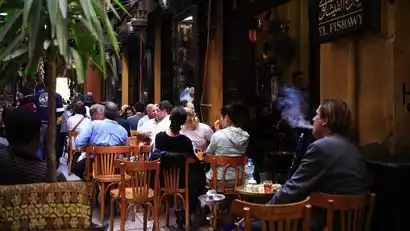
Day 10 Cairo → Giza Pyramids - Grand Egyptian Museum → Alexandria
All day
After breakfast at the hotel, we'll first visit the Giza Pyramids, one of the Seven Wonders of the World and a cherished destination for many travelers. These include the Pyramids of Khufu, Khafre, and Menkaure, as well as the enigmatic Sphinx. Around 3000 BC, the unified ancient Egyptian state was established. Ancient Egyptian kings, also known as pharaohs, were the greatest slave owners in ancient Egypt, possessing supreme power. They were considered the incarnations of gods. They constructed massive mausoleums for themselves, which became symbols of their power. Afterward, we'll enjoy a special lunch with a Pyramid View, not at a typical restaurant, but at one of the seven best restaurants on the list. Enjoy a pharaoh's perspective.
Afterwards, we headed to the newly-launched attraction, the Grand Egyptian Museum! Though it's not yet fully open and is currently undergoing trial runs, it's been at least 20 years in the making, costing $1 billion USD. With over 100,000 artifacts, from the "Statue of Ramses II" to the "Solar Boat of Khufu," it boasts a wealth of treasures and never-before-seen artifacts. The museum itself is truly a marvel.
Note: The Egyptian Ministry of Tourism has notified that the Grand Egyptian Museum will need to carry out some organizational and logistical work from June 15 to July 5, 2025. During this period, the Grand Egyptian Museum will be closed and cannot be visited. Since it is a free project, the fee will not be refunded. Please understand!
Then we drove to Alexandria, the bride of the Mediterranean, arranged hotel check-in and prepared for the Mediterranean itinerary the next day.
Note: Due to severe traffic congestion in Egypt, in order to avoid problems with subsequent itineraries, the itineraries for D8 and D9 may be swapped, but the accommodation will still be in Alexandria to facilitate itinerary arrangements. Thank you for your understanding!
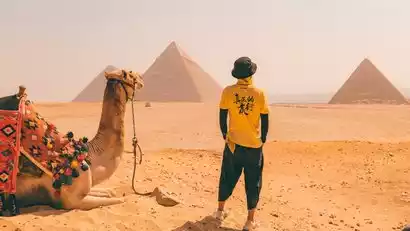
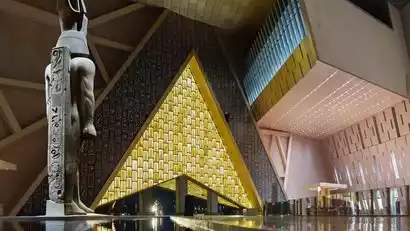
Day 11 Alexandria → Cairo ★ Disbandment Day
All day
Rise early to explore Alexandria. This ancient city was once a political, economic, cultural, and East-West trade center on the Mediterranean coast. It was a summer resort for Egypt, earning it the nickname "Bride of the Mediterranean." Unlike other European countries with Mediterranean coastlines, Alexandria offers a Mediterranean landscape steeped in Arabian charm.
After arriving, we will first visit the Lighthouse of Alexandria [Qateba Castle], which was formerly one of the Seven Wonders of the Ancient World. Nowadays, tourists from all over the world come here to pay tribute to the Lighthouse of Alexandria. After the destruction of the Lighthouse of Alexandria, only the Pyramids remain of the Seven Wonders of the Ancient World, telling the glory of their era alone.
Afterwards, we will go to the Library of Alexandria, which was built in the early Ptolemaic Dynasty in the third century BC. It was the largest library in the world at that time, with a collection of more than 500,000 volumes, covering literature, science, art, philosophy and other fields. Today, the Library of Alexandria stands on the old site, and the outer granite cultural wall is engraved with words, letters and symbols of 50 of the world's oldest languages, including Chinese characters.
Note: Since the Library of Alexandria is closed every Friday, we will visit the exterior instead of the Library of Alexandria and add the Ancient Greek and Roman Museum instead. Please understand! Then we will drive back to Cairo city.
Note: It is recommended that you book flights departing after 23:00 on the same day, and the trip is expected to end between 19:00 and 20:00 in the evening.
Finally, everyone dispersed and headed to the airport for their own flight. If you have a flight departing the next day, you may need to book a night's accommodation in Cairo at your own expense. You can continue exploring more of Cairo's hidden gems. The tourists said goodbye to each other and remembered to return to hand in their homework!
